This is the text of a talk originally presented at the conference Fan Cultures and the Premodern World at Oxford University in July, 2019, organized by Dr. Juliana Dresvina of the Oxford History Faculty. This presentation represents a collaboration between myself and Dr Brandon Hawke of Rhode Island College, and is essentially a summation of our video project Sacred Texts: Codices Far, Far Away
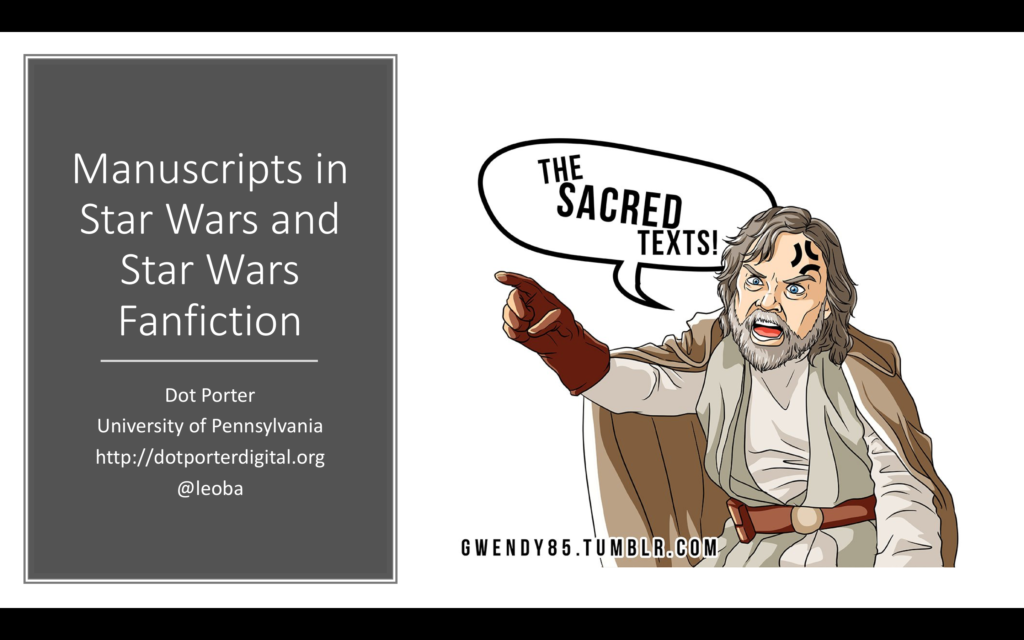
Hi, My name is Dot Porter, and I want to start by thanking Juliana for the wonderful organization of this conference, and also for including me in the program. This is very different from the kind of conference I normally present at – in my day job I’m a special collections curator at the University of Pennsylvania, specializing in medieval manuscripts, their digitization, and their post-digital lives. Basically I get paid to digitize medieval manuscripts and then play with them. (I’d be remiss if I didn’t mention the Bibliotheca Philadelphiensis project, funded by the Council on Library and Information Resources, which is just finished, and through which we digitized and made available for reuse more than 465 codices from institutions in Philadelphia)

Aside from my family there are two things in life I adore: medieval manuscripts, and Star Wars. I must admit that while I am a scholar of manuscripts, of a sort, I am also a fan. I love manuscripts – the way they look, feel, smell; I love to hold a manuscript and think about all the other people who have touched it, and consider the signs of use that imply their long histories. This interest has led to current work on conceiving of medieval manuscripts as transformative works themselves, first presented at Leeds 2018 and work I’m continuing looking specifically as Books of Hours. (My original draft of this presentation featured some of this work, but it threatened to take over, so I axed it all; a blog post of my Leeds paper is on my blog, if you’re curious).
While I am arguably a manuscript scholar, I am most definitely not a scholar of fandom studies – you will, I’m sure, find my theory wanting – nor am I a scholar of Star Wars, but I am a fan. I do the things that fans do. I’m on Tumblr, although that platform is pretty dead now, and I have a fandom Twitter account, which is much more active. I write and consume fan fiction, and I regularly commission artwork to illustrate my stories and stories I would like to write. I have written exactly one notable meta, which was even picked up by the AV Club – they actually cited me, unlike many of the other websites, which only cited the person who stole my work and posted it on Reddit!
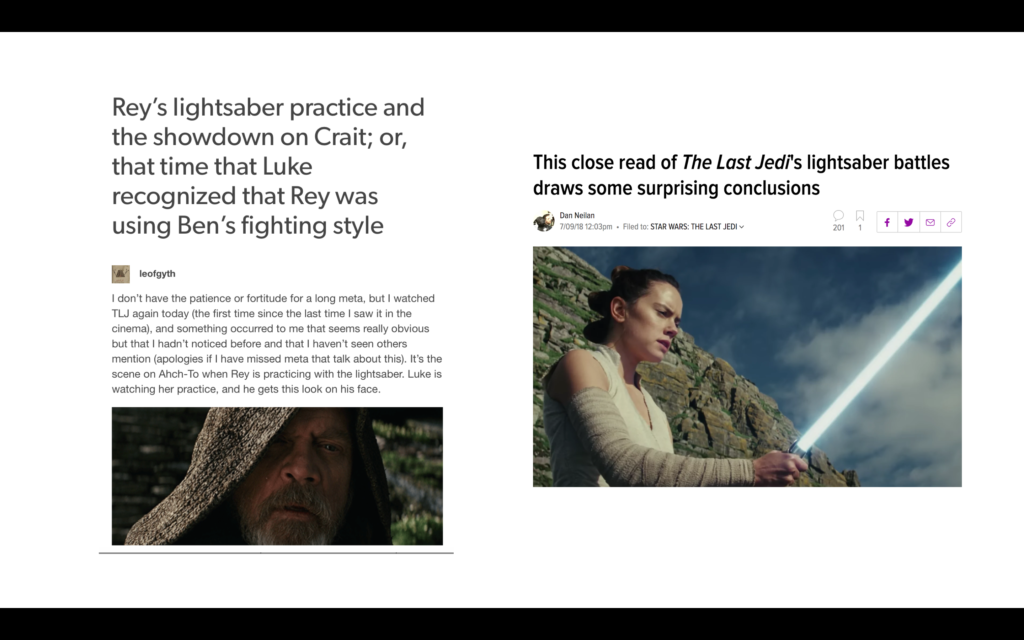
In Star Wars: The Last Jedi, released in December 2017, we were introduced, for the first time, to manuscripts in the Star Wars universe. I had avoided trailers and spoilers, so the first time I saw this was in the theater, and I was, as the kids say, shooketh. Not only one manuscript, but a whole shelf-full of them! And they’re important. Rey, our heroine, has been sent to the island of Ahch-to to bring Luke Skywalker back to help the Resistance, led by Luke’s sister General Leia Organa, defeat the First Order. Rey has been there for a day or so, following Luke around, making no headway, when she is called to the Uneti tree, a large, hollow, Force-sensitive tree that houses these manuscripts. It’s in the company of these books that Rey and Luke finally communicate with each other, when Rey admits that she has only recently come to the Force and that she needs Luke to train her to be a Jedi, and when Luke grudgingly agrees to give her some lessons, but also tells her that the Jedi must die. Exciting stuff, and the books are there to hear it.
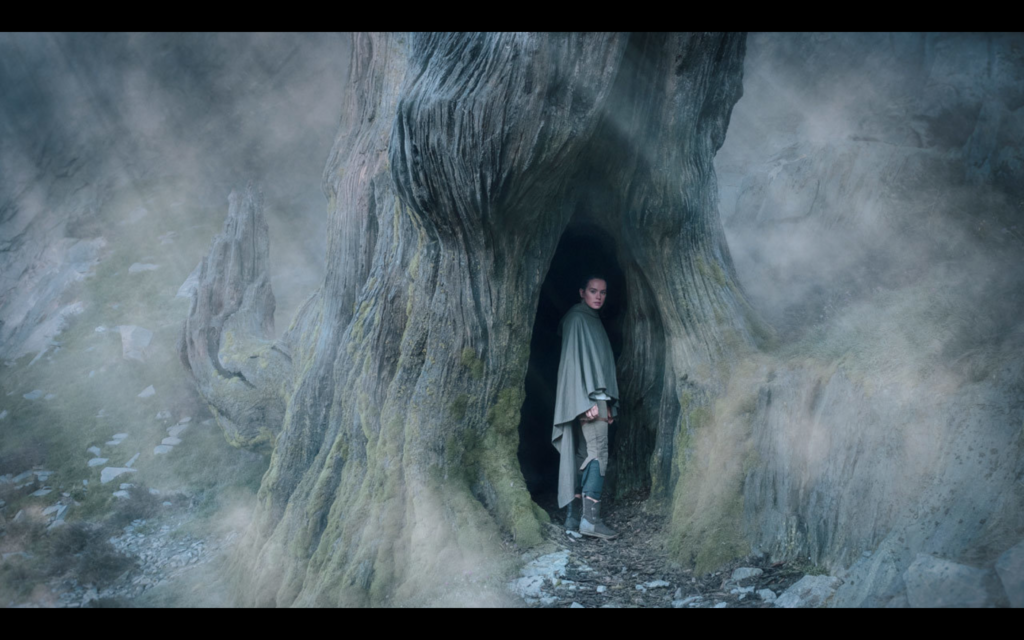
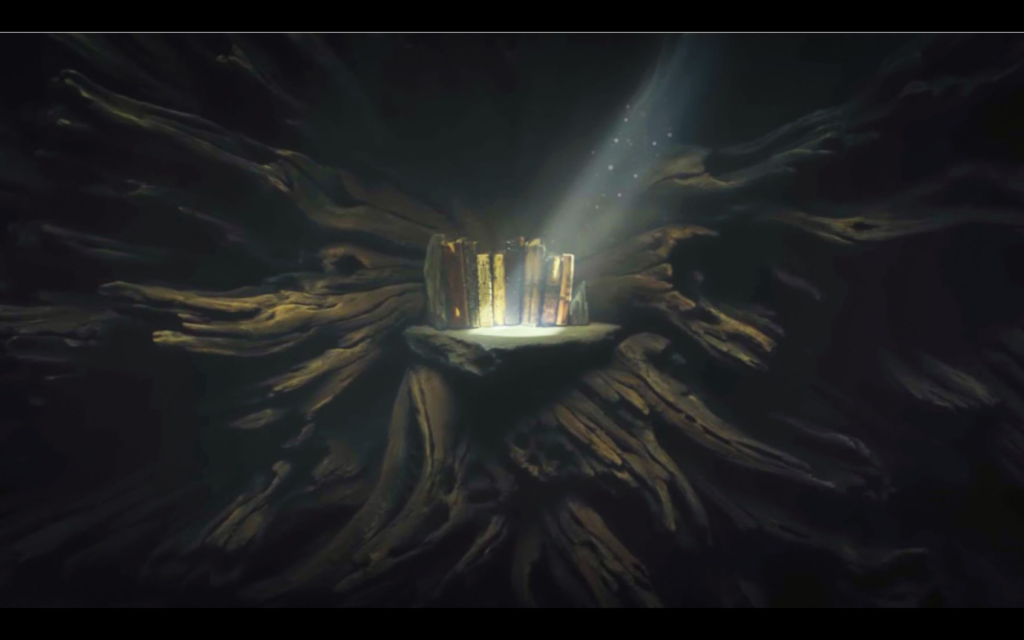
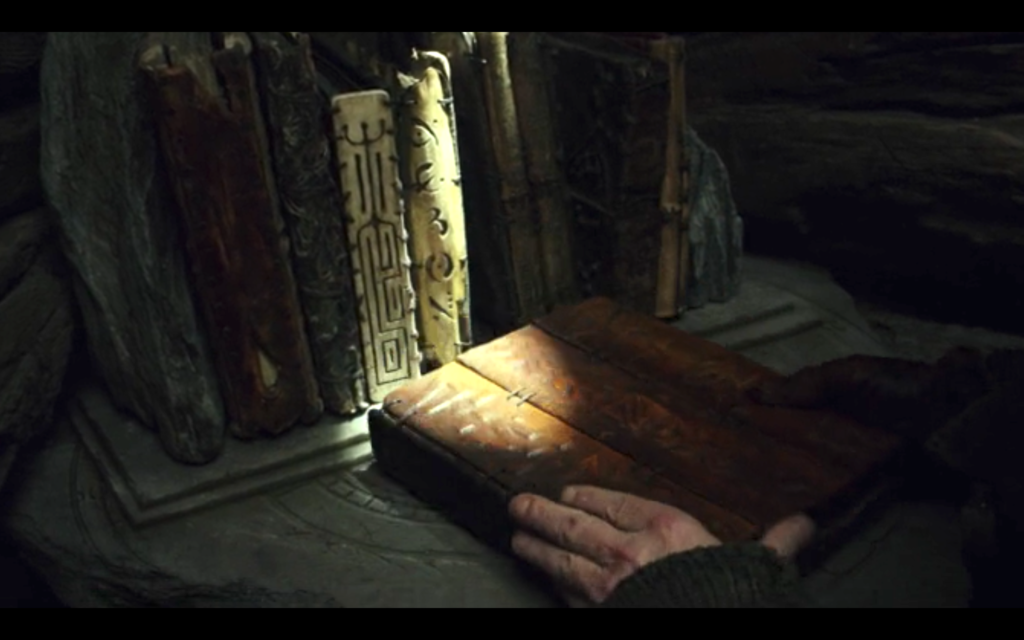
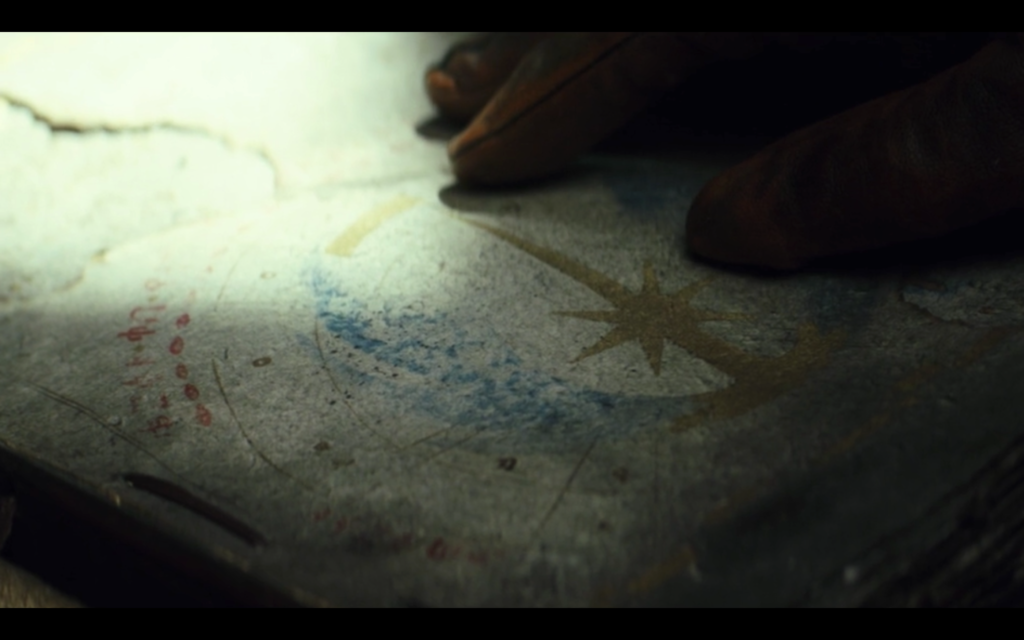
According to Star Wars The Last Jedi: The Visual Dictionary, Luke Skywalker scoured the galaxy for these texts and collected them himself, storing them in the tree that we see in the film. So these texts weren’t originally all in one collection, they are from many different planets, potentially written in ten different places, ten different times, ten different languages and alphabets, although there’s only one we ever see in the film. The starwars.com blog post “Inside the Lucasfilm Archives: The Jedi Texts” gives us an up-close look at the prop book that was shown in the film; as you can see it’s a real book, written and bound, and even damaged. There are manuscripts in our collection at Penn that look not very unlike this book. It is a real manuscript.
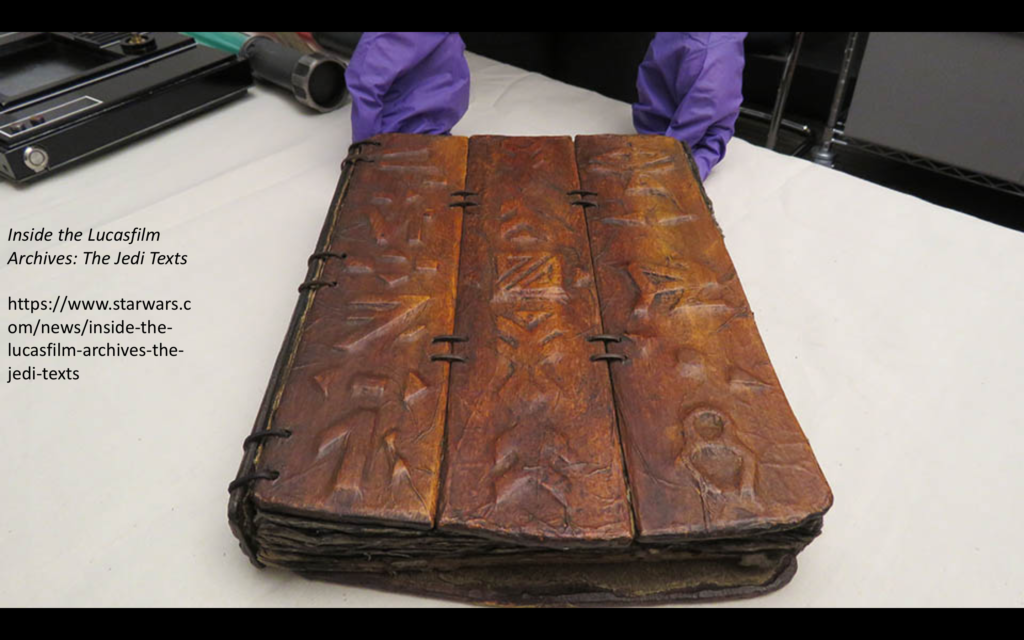
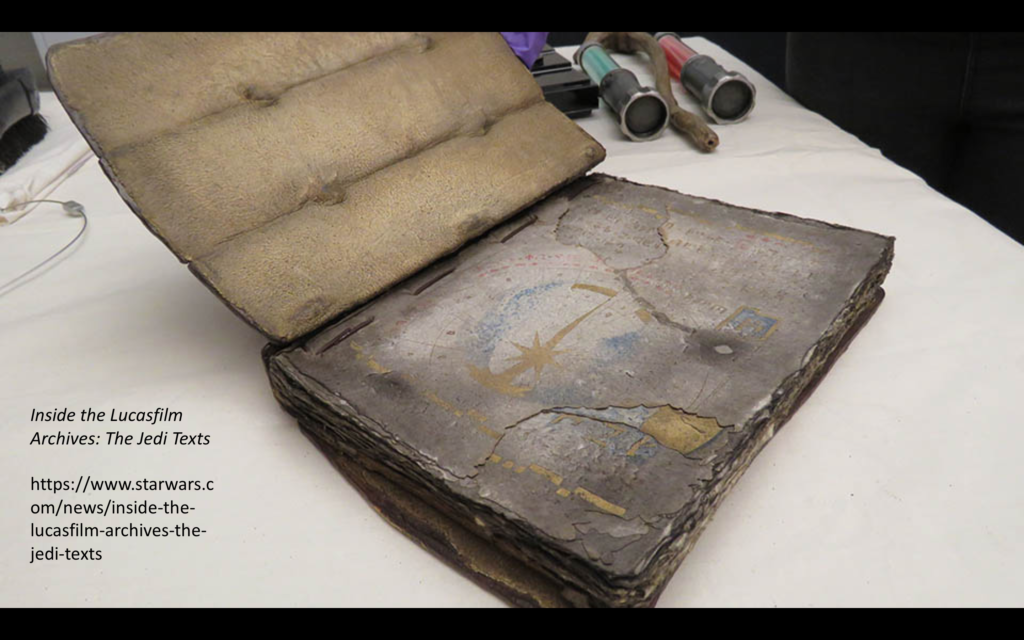
This is one manuscript in the universe. What else do we know about manuscripts in star wars in general? To be honest: not much. But we do know that it is rare to write by hand (as opposed to writing with digital technology like data pads). In Claudia Gray’s novel Bloodlines, which takes place six years before The Last Jedi, Leia Organa is preparing for a fancy party when she finds a handwritten note at her seat, and she’s shocked: “Virtually nobody wrote any longer; it had been years since Leia had seen actual words handwritten in ink on anything but historical documents.” So it appears that, by the time the current films take place, there are no longer manuscripts being actively written in the galaxy, or at least it’s very rare.
Interestingly there is one character in the Sequel Trilogy who it is suggested knows how to write by hand: Kylo Ren, formerly Ben Solo. There is a scene – the same scene is actually shown three times, from three different points of view – where a young padawan Ben is sleeping and his Uncle, Luke Skywalker, comes to him and looks into his head, sensing great darkness in his dreams. Ben calls his lightsaber to either attack his uncle or defend himself against him, depending on the version of the scene, and in one of these shots we can see that he has a calligraphy set in his bedroom. We can see the set here, in a screenshot of his desk just before he calls his lightsaber over – which knocks over the pen and inkwell and jar of parchment scrolls in the process – and in The Art of Star Wars: The Last Jedi.
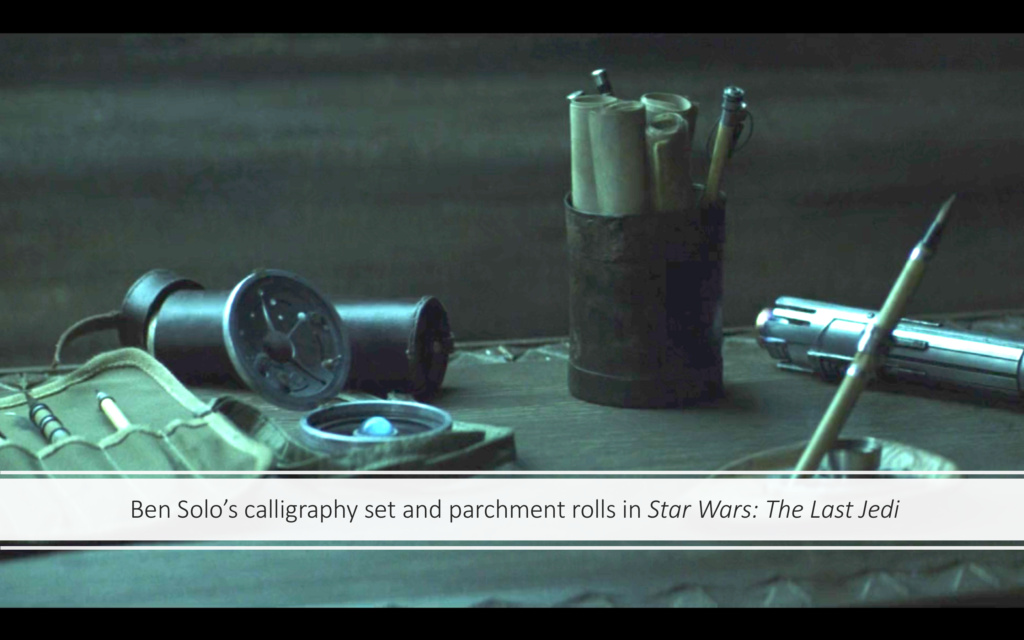
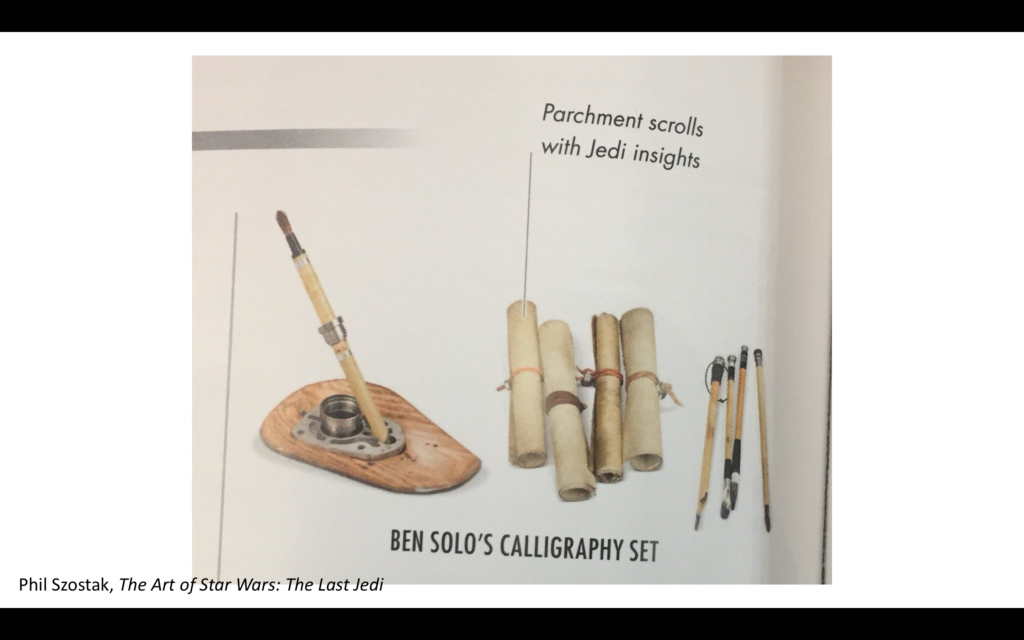
What else do we know about these specific books? There is concept art in The Art of Star Wars: The Last Jedi; including six internal pages and six shots of the bindings.
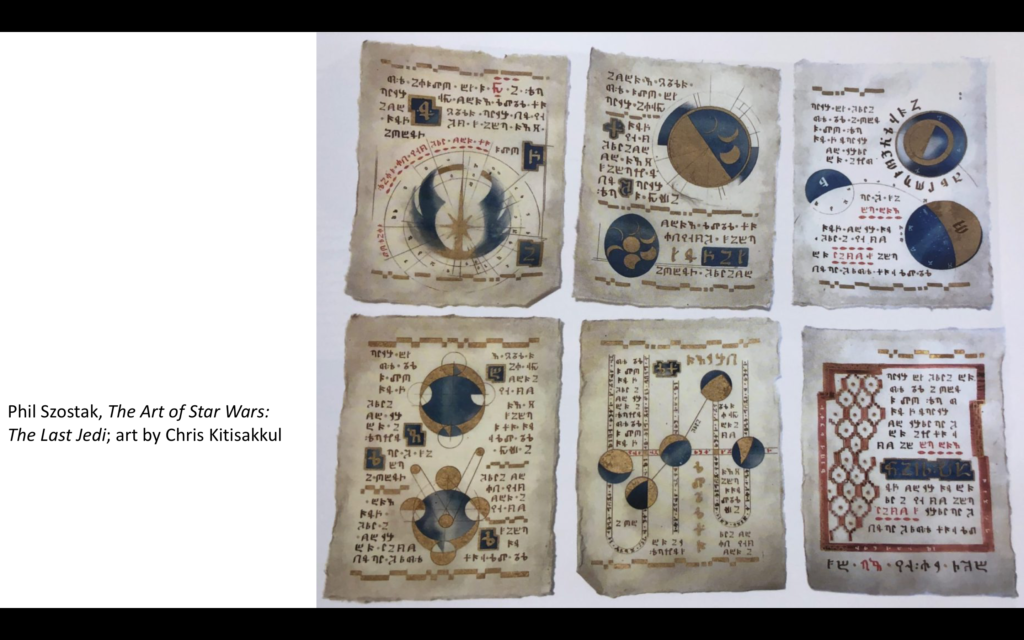
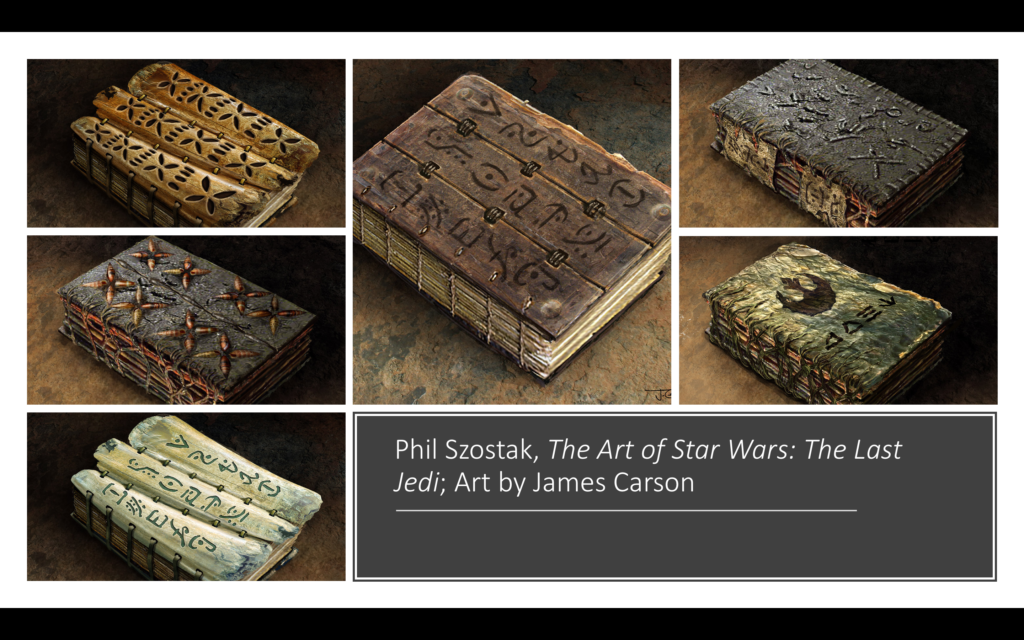
I remember looking at the concept art and thinking how alike and different they were from the manuscripts I’ve had the pleasure of working with at Penn, and I discovered that my Twitter mutual Brandon Hawke, an Assistant Professor of English at Rhode Island College, was having many of the same thoughts that I was. So in October of 2018, Brandon came down to Penn and we sat for hours in front of a green screen and talked about manuscripts and Star Wars, comparing books in the Penn collections to what we see of the manuscripts in the concept art. We’ve been posting snippets of our discussions on the Schoenberg Institute YouTube channel, and there’s a link at the top there if you want to check them out. So for most of the rest of this paper I’ll be walking through some of the possible comparisons between real manuscripts and the Star Wars manuscripts. I want to stress that we did this for fun, and not for science, and that we’re limited by the collections at Penn and by our own knowledge.
Consider yourself warned: The remainder of this presentation is essentially an educated fan, raving.
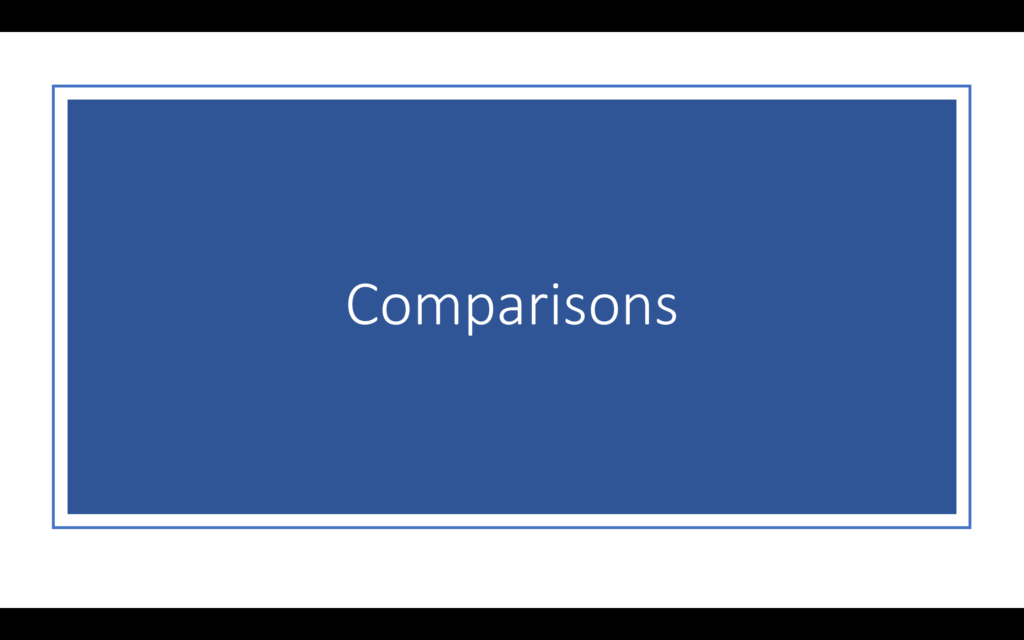
As far as Brandon and I have been able to determine, this is a previously unknown script in the Star Wars universe. When I saw it my mind immediately went to Ge’ez, shown here in an early 20th century book of Hymns from Ethiopia. There’s something about the blockiness that is just slightly curved, and a few of the letter forms are slightly similar although I don’t think that’s necessarily meaningful.
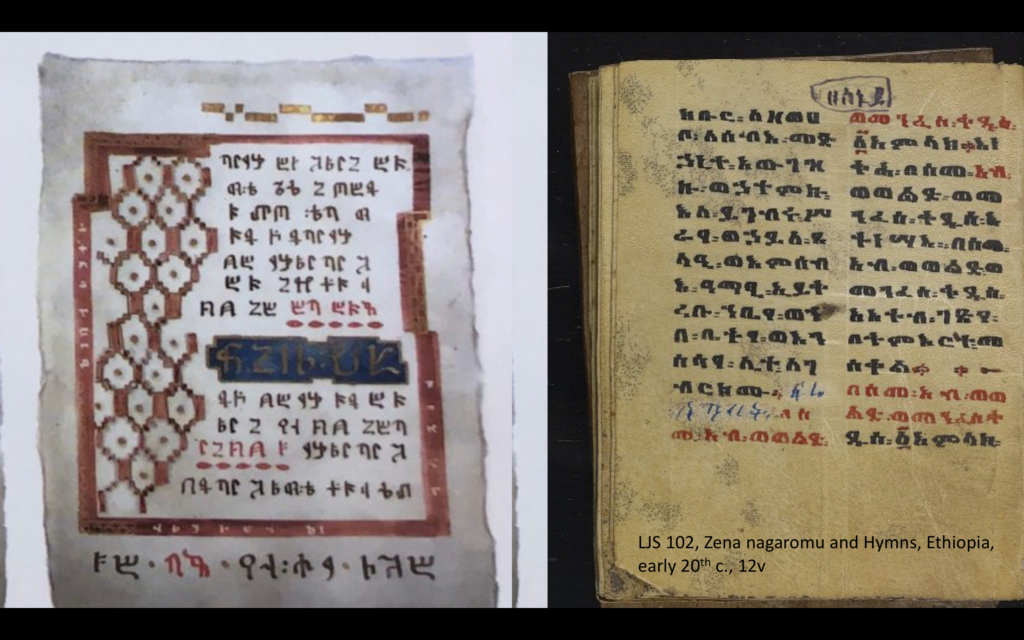
We also made a comparison with Coptic, which is thinner, more curved, and perhaps a closer match.
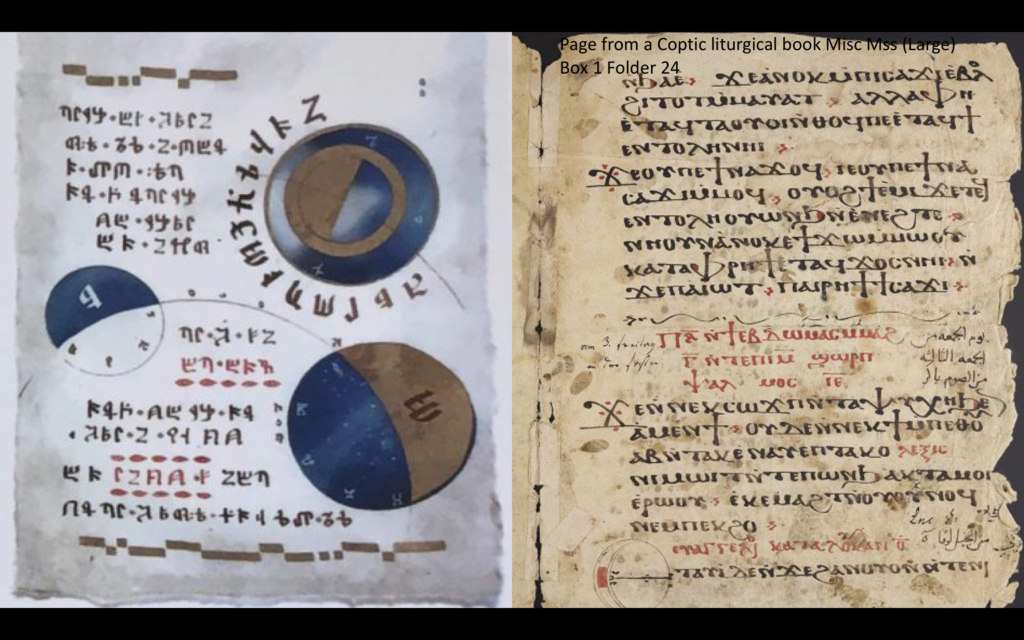
For the third example we looked not at the text, but at its layout on the page. We found a similarity with this 16th century collection of Persian poetry, both its illuminated header (similar in aspect to the illuminated blue line of text in the center of the ancient Jedi text) and the framing of the text.
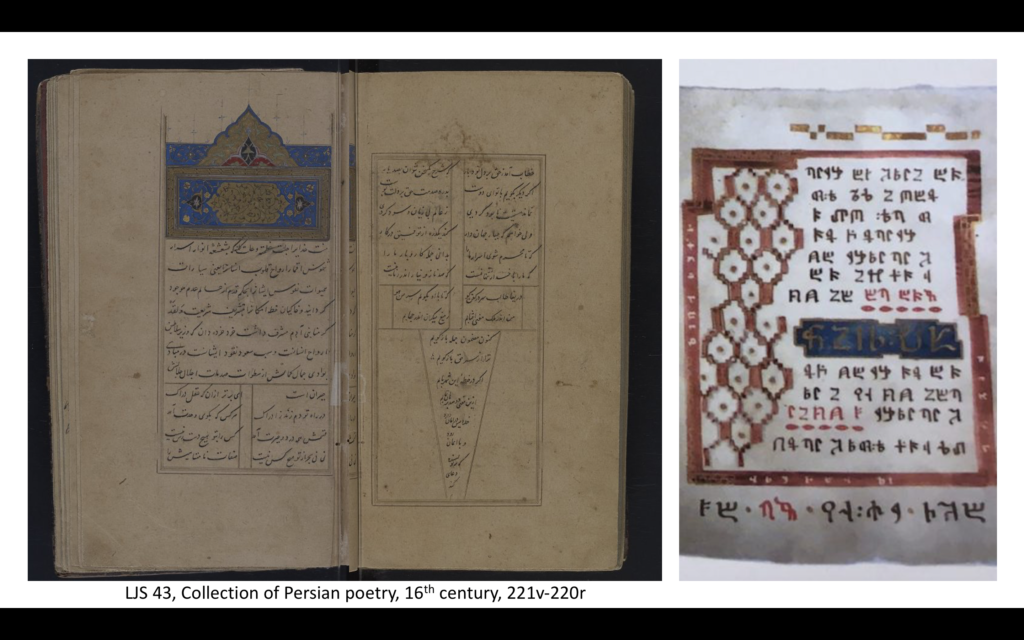
Aside from text, it is clear that the concept art of pages supplied to us here represent astronomical texts. This is really not surprising, considering that in the Star Wars universe we have a galaxy that seems to have been very closely connected, between planets and cultures, for a very long time, and so it makes sense that even the most ancient texts would be concerned with objects in the system – stars and planets and moons – and how they related to and interact with one another. And this is a major concern in medieval astronomical texts, too: these texts illustrate people trying to make sense of the system they live in, in the best way they know.
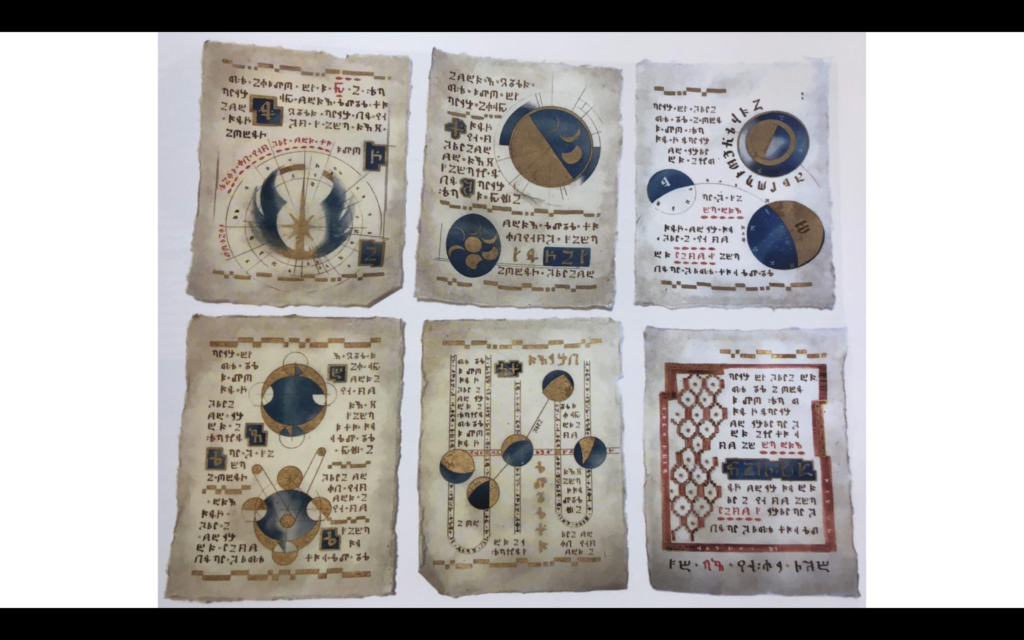
One of the pages in the jedi texts is the symbol of the Galactic Republic, but placed on some kind of chart, with characters dispersed through the chart and text – perhaps labels – along the outside. We found a similarity with this chart in LJS 57, a 14th century astronomical anthology from Spain. I don’t know exactly what this chart represents but I can tell you that astronomical texts are full of similar charts; it was one of the ways that medieval people made sense of the data they had available to them.
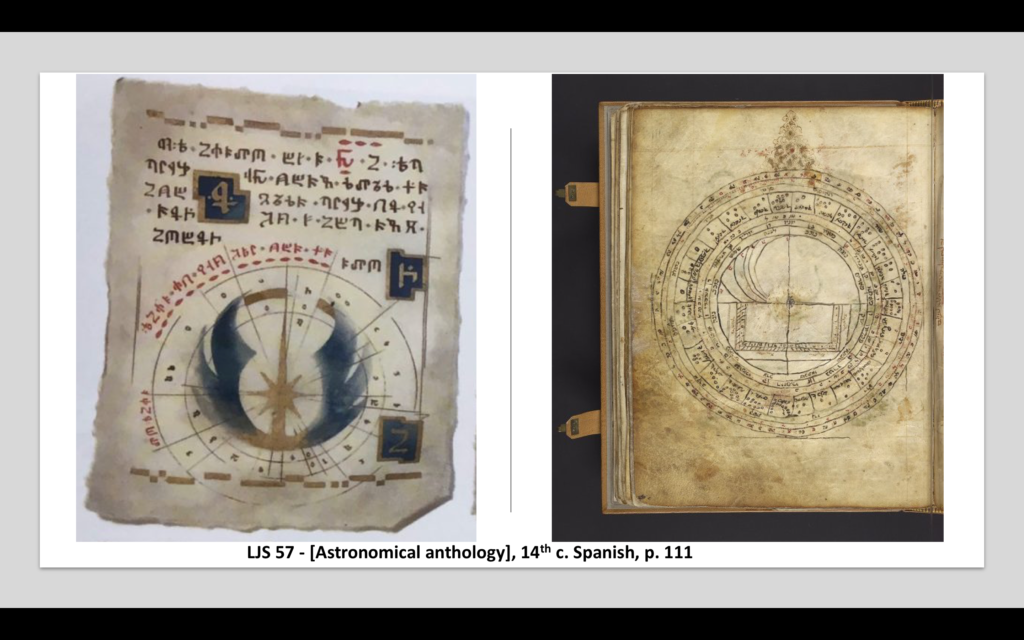
Something similar is happening here, in LJS 449, a 15th century German medical and astronomical miscellany. These charts are perhaps a bit simpler than the Spanish chart, but they have that attractive blue coloring. Both the coloring and the arrangement of data around the circle reminded Brandon and me of the diagrams on this page of the Jedi texts.
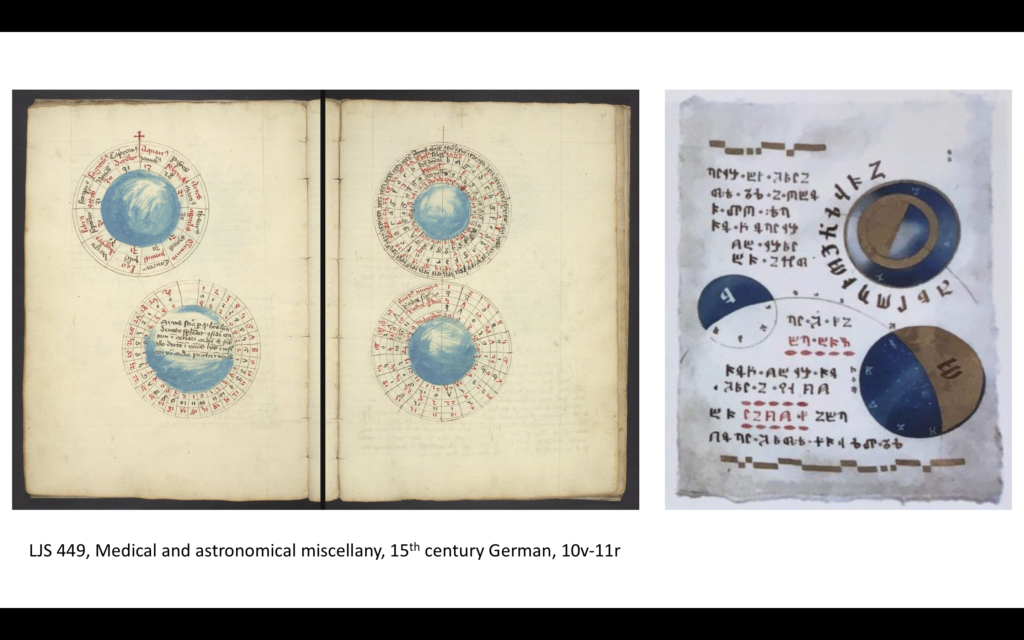
The next three slides show diagrams from a mid-13th century copy of Johannes de Sacro Bosco’s, Algorismus and Tractatum de sphaera, an immensely popular text that was copied and translated and commented upon from the time it was written in the early 13th century (it is possible that our copy was written during Sacrobosco’s lifetime) through the 16th century. It is full of diagrams illustrating the movement of the planets, and the sun, and the moon in relation to the earth. I personally find these diagrams most reminiscent of the two pages on the bottom left, although I feel like their organization suggests a sense of scale that is lacking in the medieval diagrams.
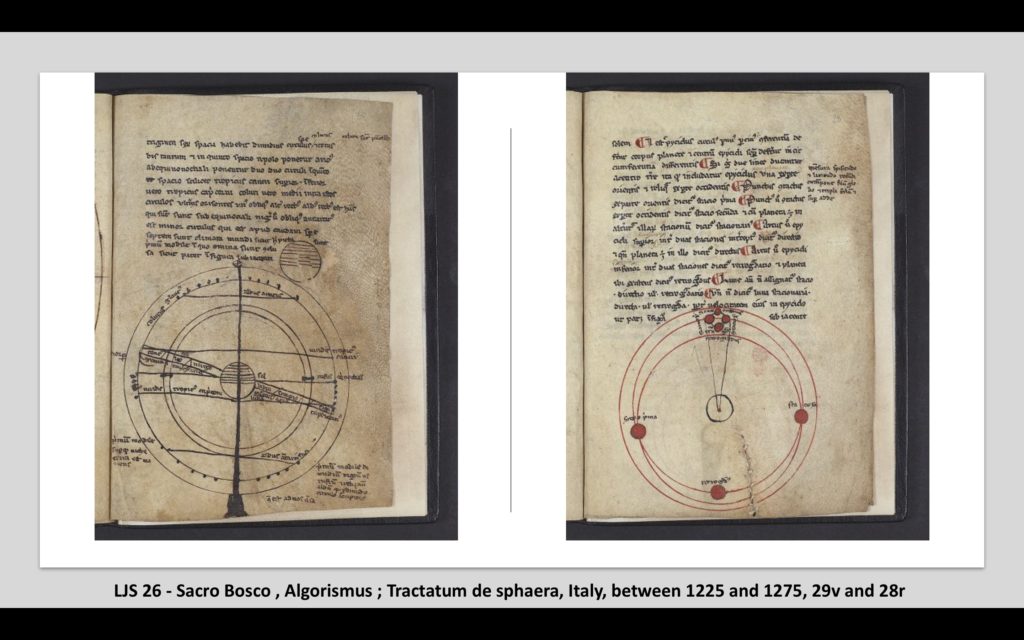
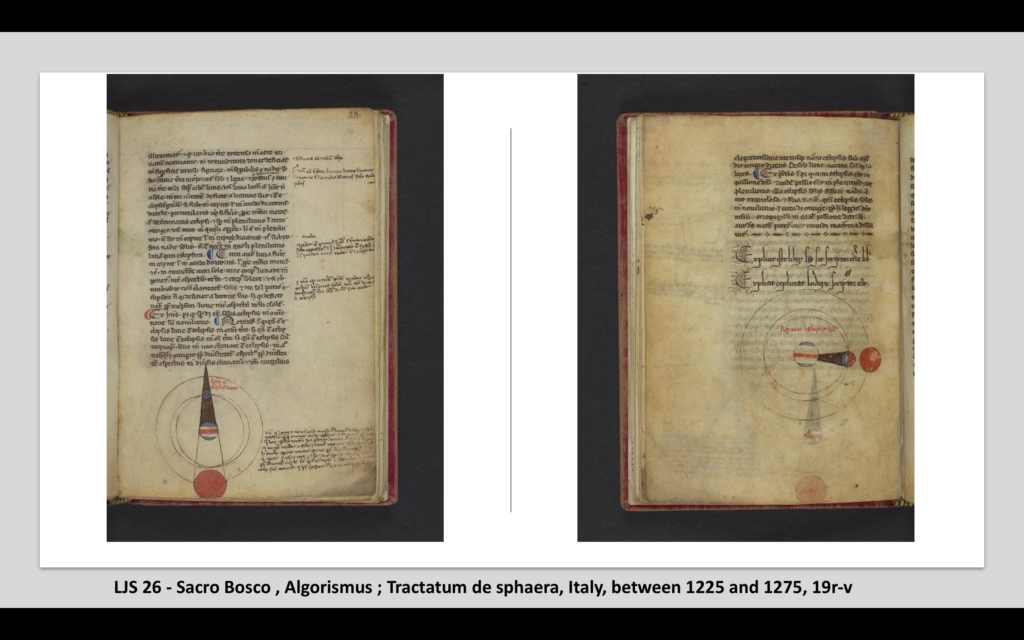
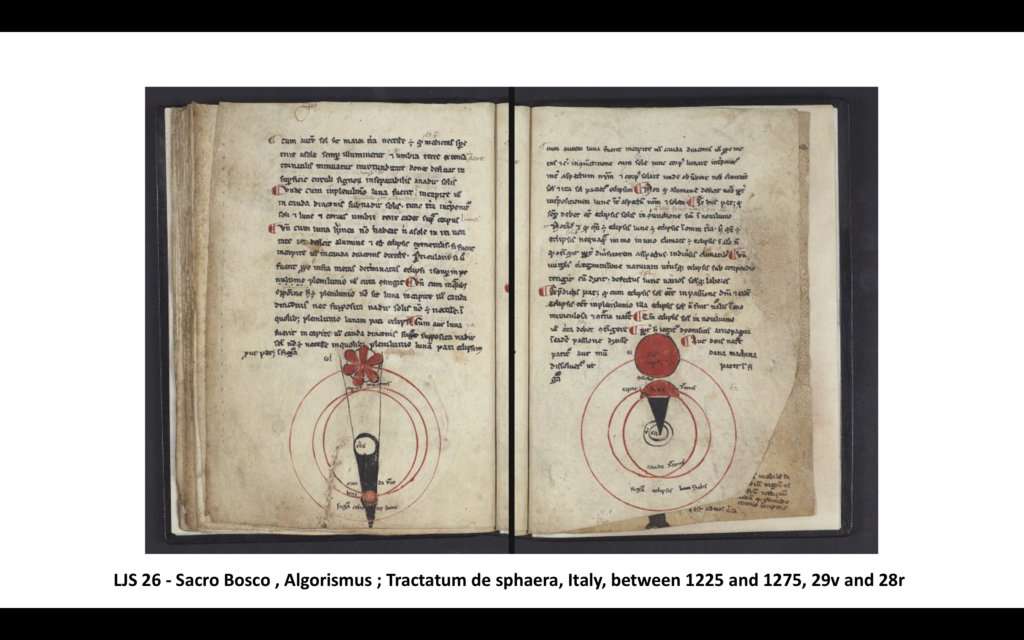
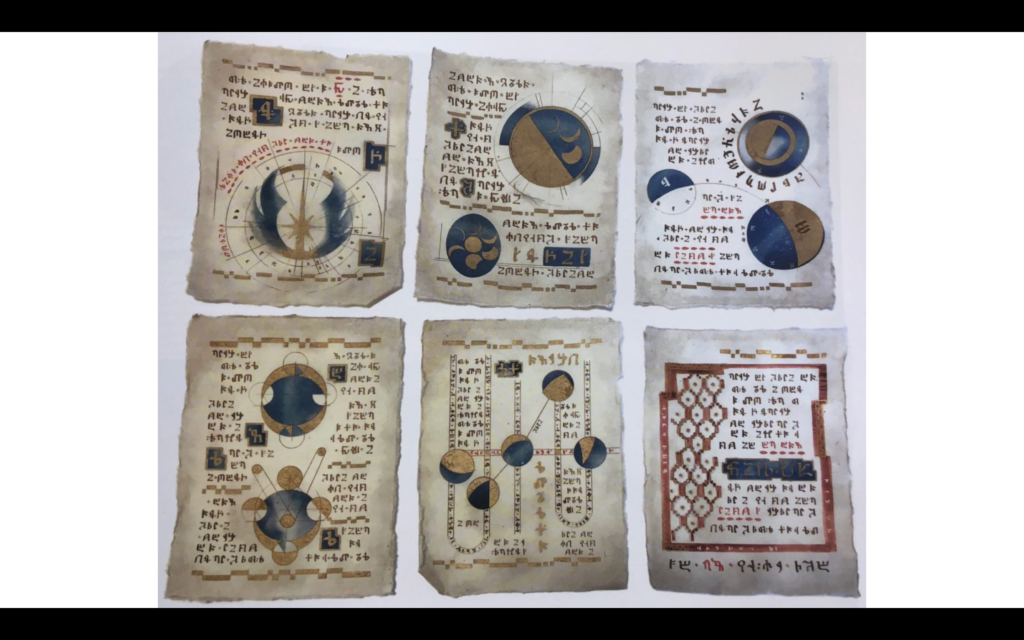
Medieval astronomers only had to think about the earth, and the moon, and the sun, and a few other planets. On the other hand, the Star Wars universe operates on a whole other level – a galaxy with countless star systems and planets that aren’t even charted. When I look at these diagrams I see a clever attempt to illustrate scale using the relatively primitive technology of ink and paper in place of the star charts and 3D maps that we see in the films.
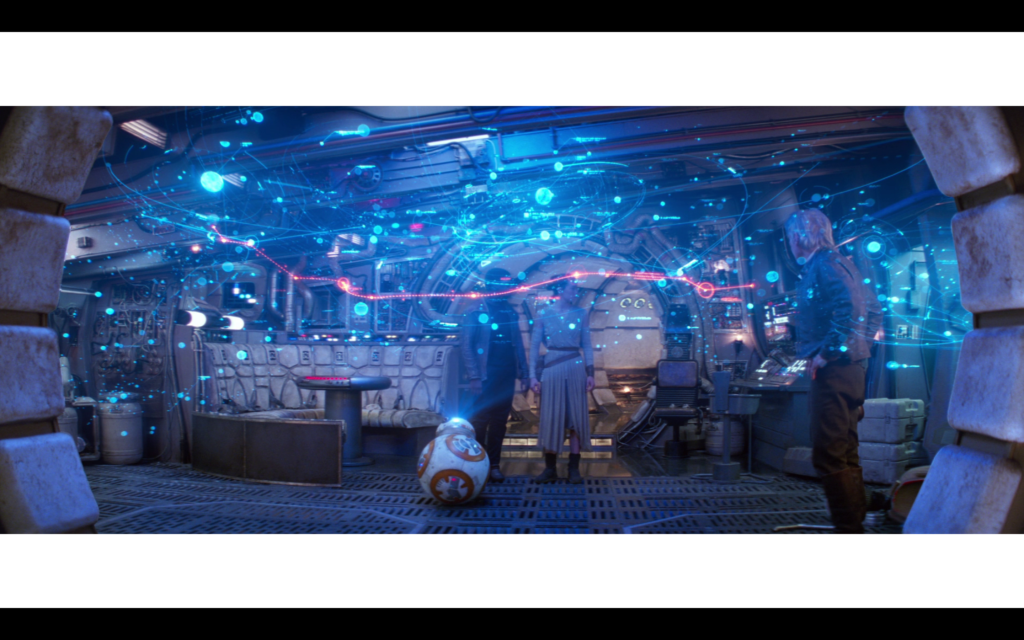
On the other hand, there are some really simple 1:1 comparisons to be made, such as this diagram, which pretty clearly illustrated the phases of a moon.
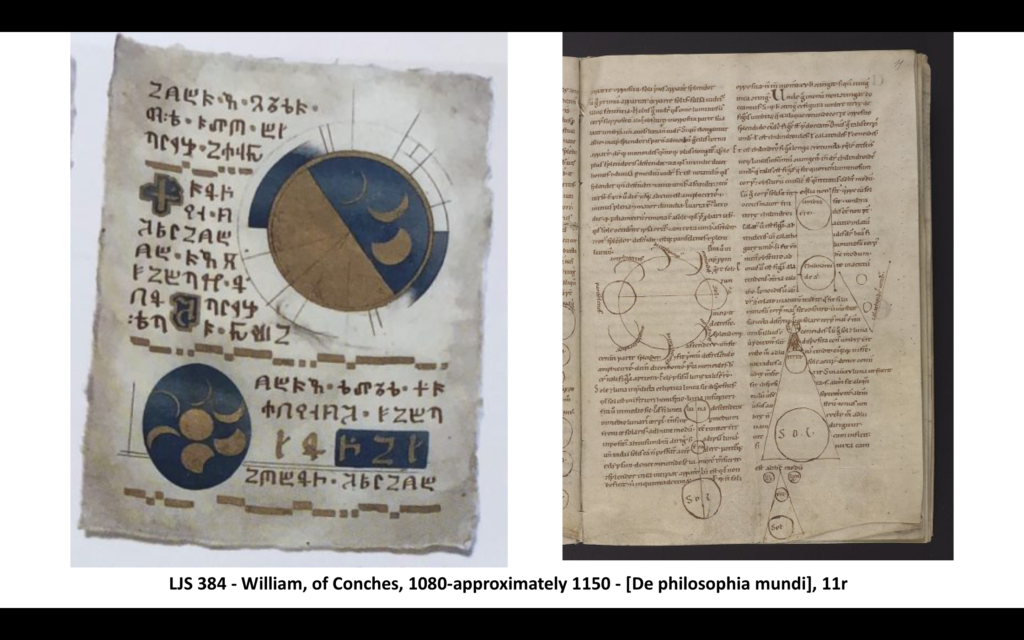
I want to take a quick look at the bindings of these manuscripts, particularly this piece of concept art, which is quite similar to the prop that we see in the film.
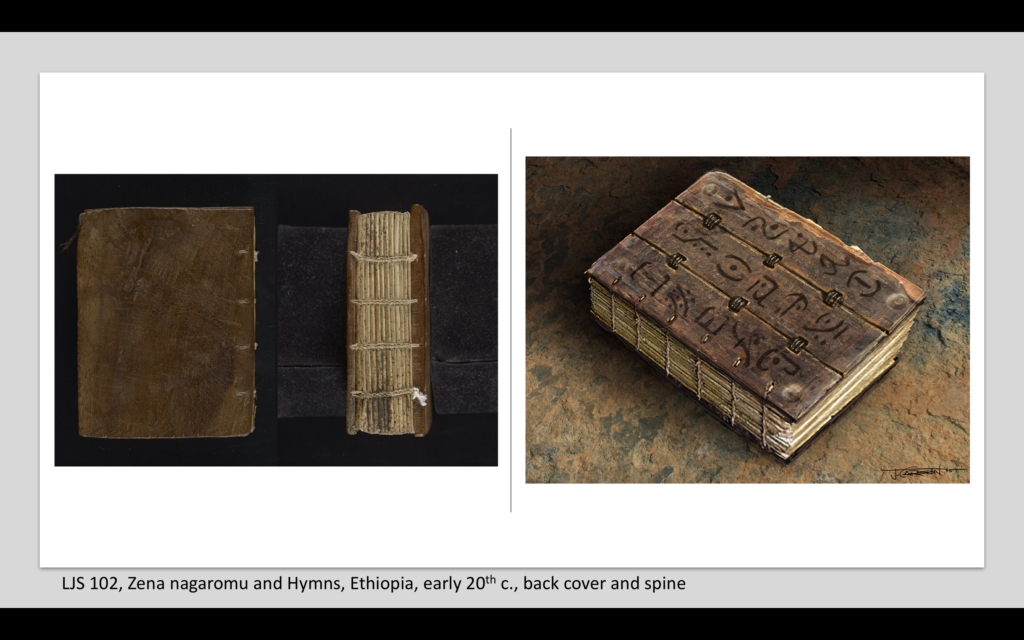
This has a fairly standard binding structure, quite similar to LJS 102, the Ethiopic manuscript we looked at earlier, except for the front cover, which is built of three separate pieces that are obviously connected together. In western bindings, if a wooden cover were a composite of multiple pieces, we would expect that to be obscured, as in this late 13th century Catalonian manuscripts (It’s hard to tell, which is the point, but this cover is made of three pieces of wood).
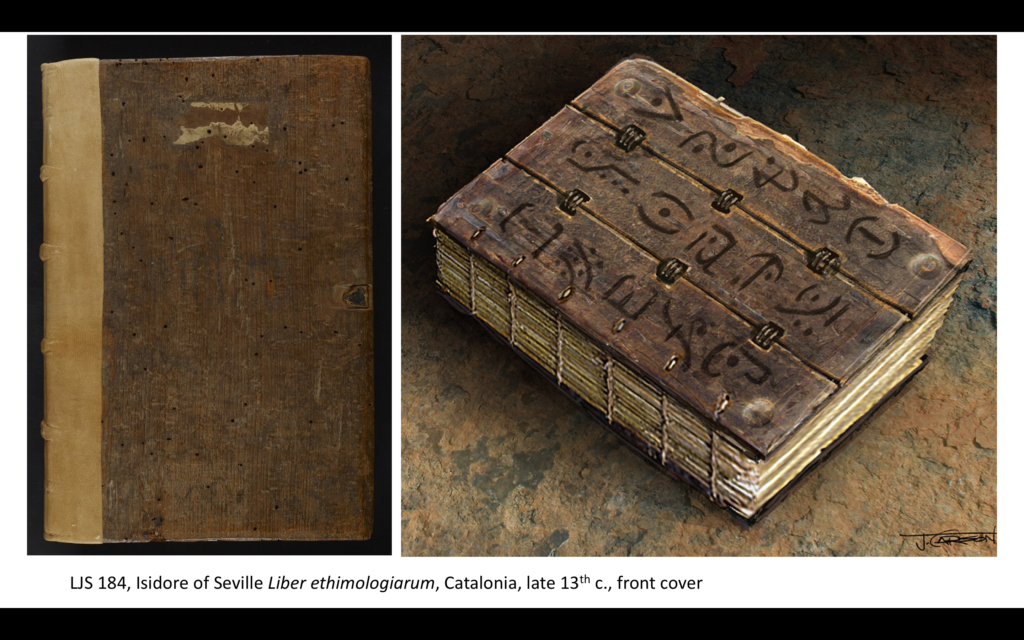
The only example of a cover like this I’ve seen is from the Walters Art Museum, this 14th century Ethiopian Gospel book. The cover was broken and then sewn back together, but this was the result of an accident, not done on purpose.
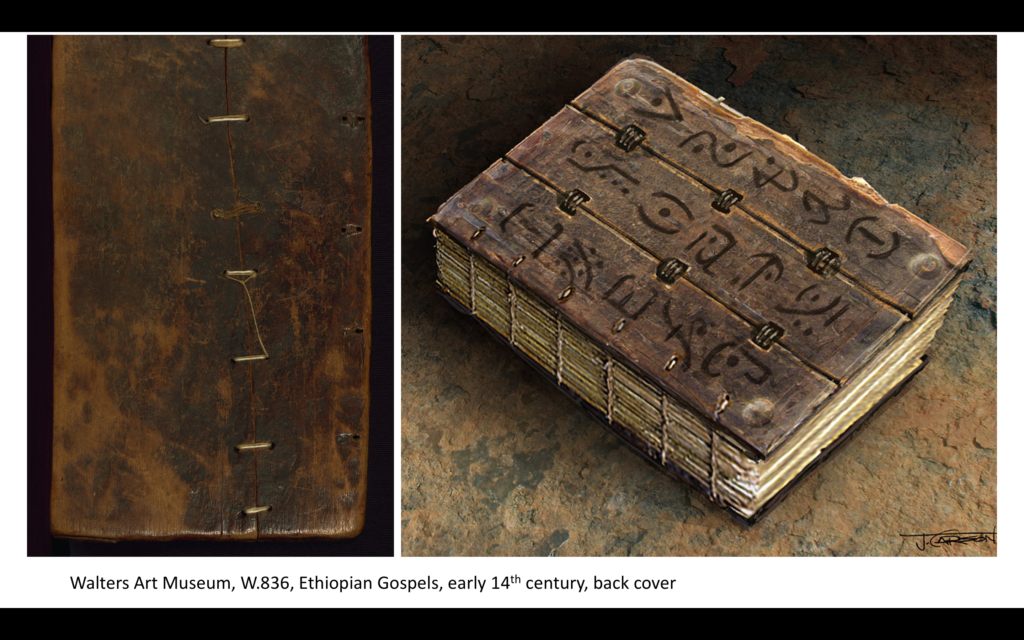
My colleague Alberto Campagnolo also suggested that it is similar to the Chinese practice of writing on bamboo strips and binding them together, as in this 18th century example.
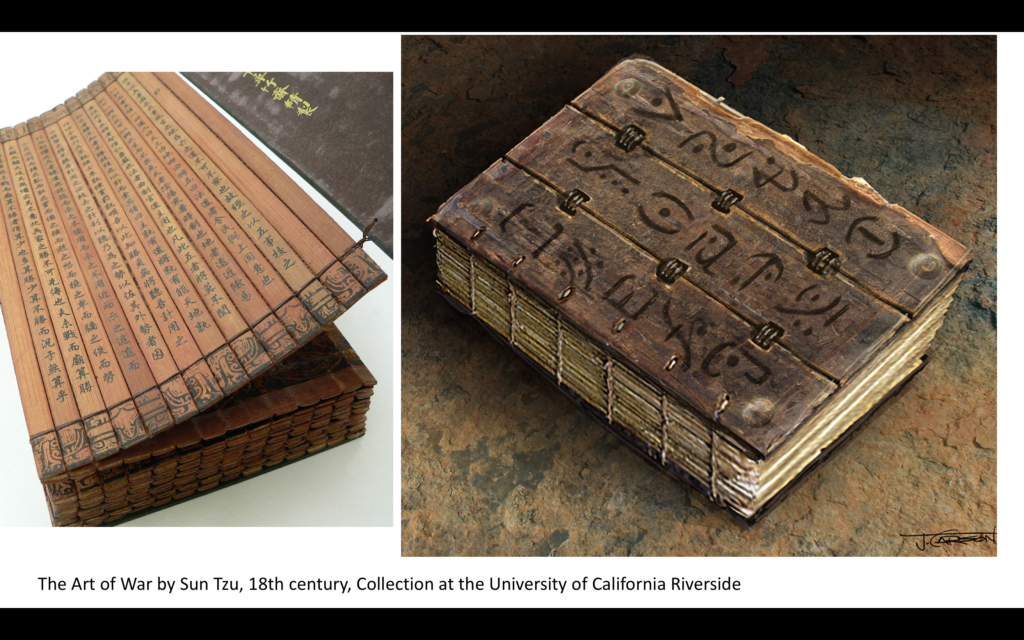
This is one instance where the artists who created these concepts have done an excellent job with suggesting a manuscript culture – in fact, several manuscript cultures, cultures that use what is available to them. There are two manuscripts here that appear to be bound in decorated tusks, one that has what appear to be shells embedded in a leather binding, and another that might be bound in hairy skin or – I like to think – had the binding grown on it underground. In any case these all suggest books written in different places, perhaps at different times, and as a manuscript scholar I find that fascinating.
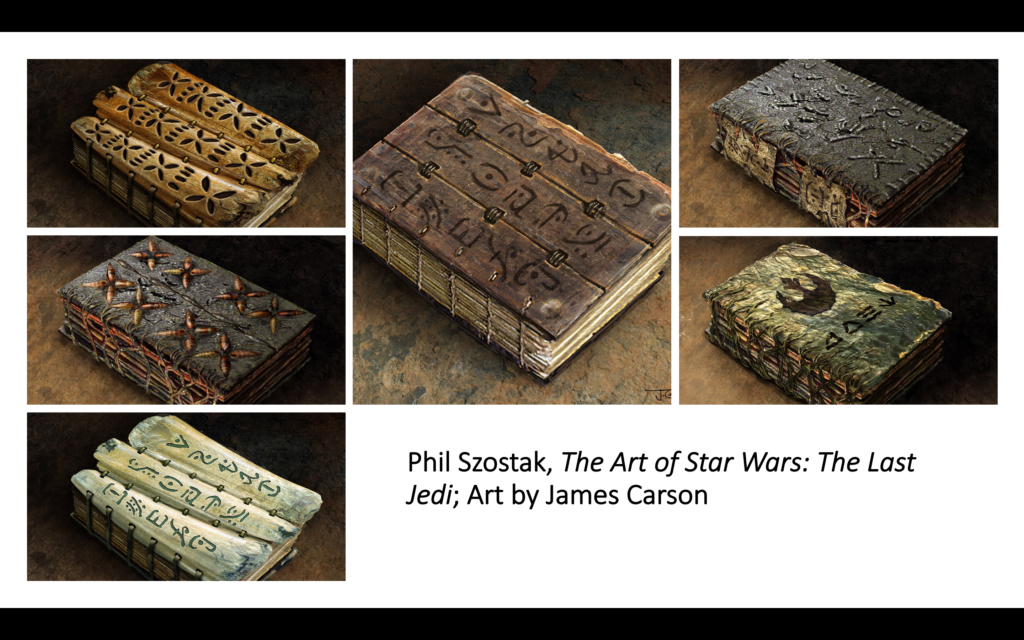
Following up on this I wanted to see how the concept of the manuscripts was received by writers of fan fiction. As a fan author myself I have written a few stories featuring the ancient Jedi texts, but given my interests that made sense; I was curious to see what other authors have done with them. I think there’s more extensive work to be done here, but in reading through the 40 or so stories I was able to find (by searching AO3 for ancient jedi texts, and the “jedi text” tag) I discovered not surprisingly that the stories focused on the text of the books, not on their physical appearance (which is at least partially due to fan fiction being a written medium, vs. film being a visual medium) and that there are three main themes that can appear by themselves or be combined:
- Rey can read the texts on her own, or she needs help (Kylo Ren, C3PO, Obi Wan Kenobi’s force ghost)
- The translation is used to further the story (whether or not it happens)
- The texts do something (e.g., magic spells)

What will happen next? Will there be manuscripts in the Rise of Skywalker, the final film in this last trilogy? Of course I hope so, and it seems likely. The Uneti tree was struck by lightning and burned, but Rey took the manuscripts with her (here is a screenshot of a drawer in the Millennium Falcon, at the very end of the film, showing the books clearly safe and tucked away)
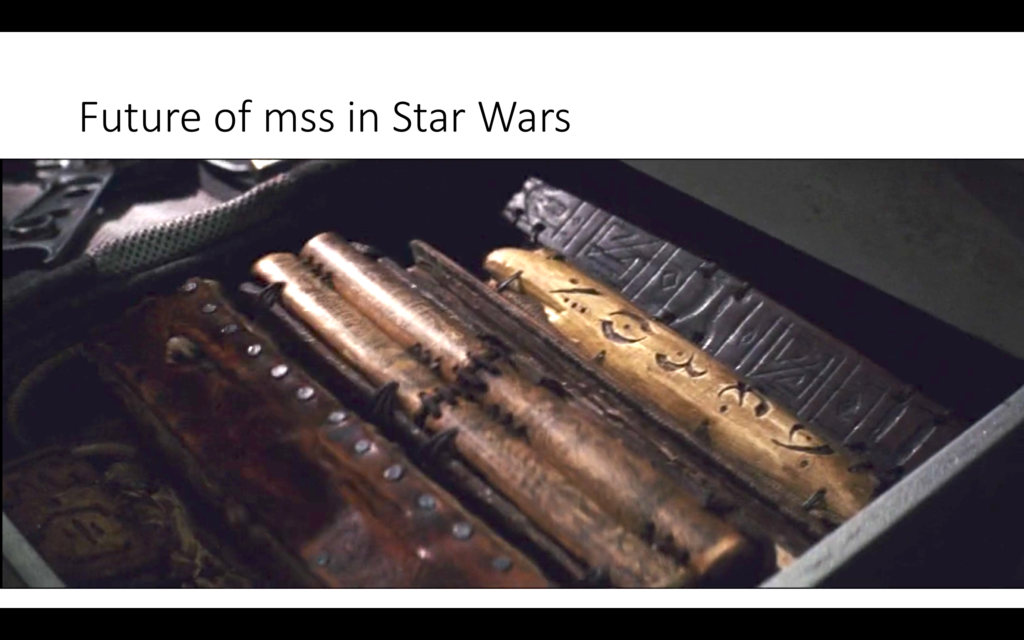
and in the Poe Dameron comic #27 we learn that Rey has been working with C3PO to translate the texts.
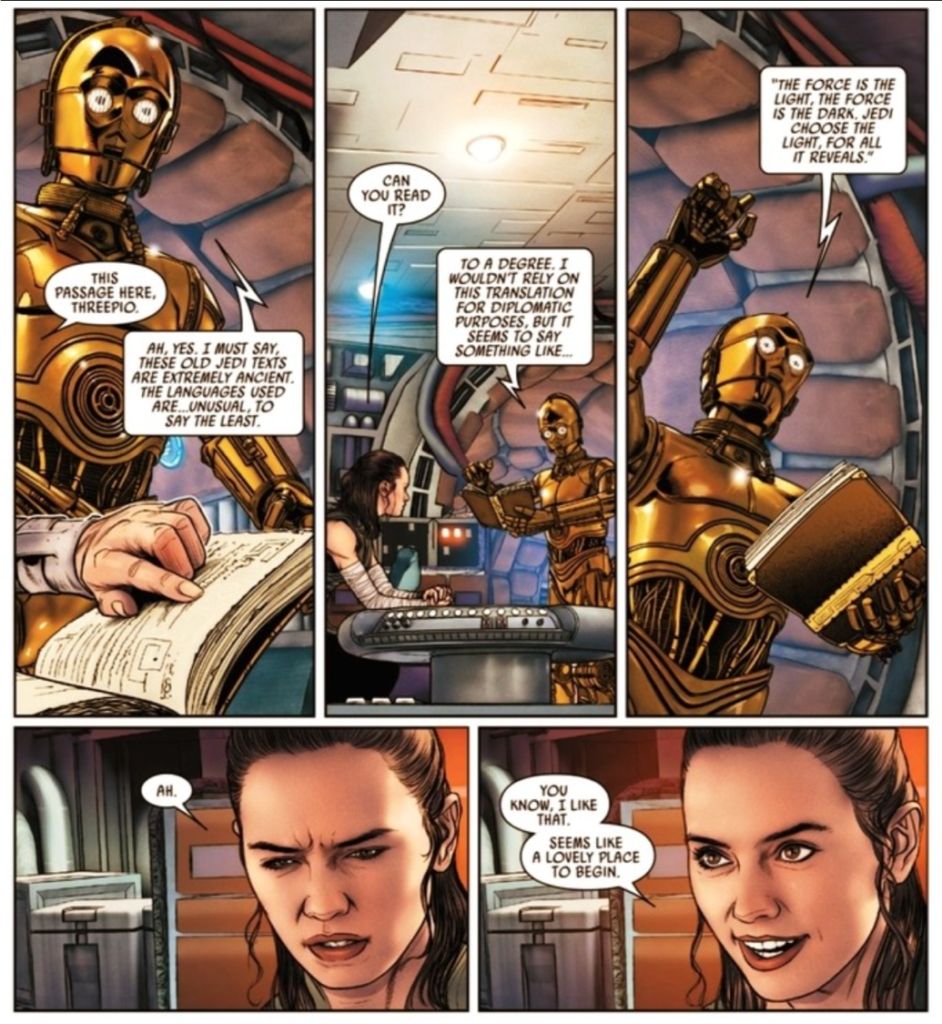
And there’s also the spectre of Kylo Ren with a calligraphy set; if he had access to these manuscripts when he was studying with Luke Skywalker, it’s possible that he has read and perhaps even annotated some of the books. Only time will tell, and I for one can’t wait for December.
Thank you!
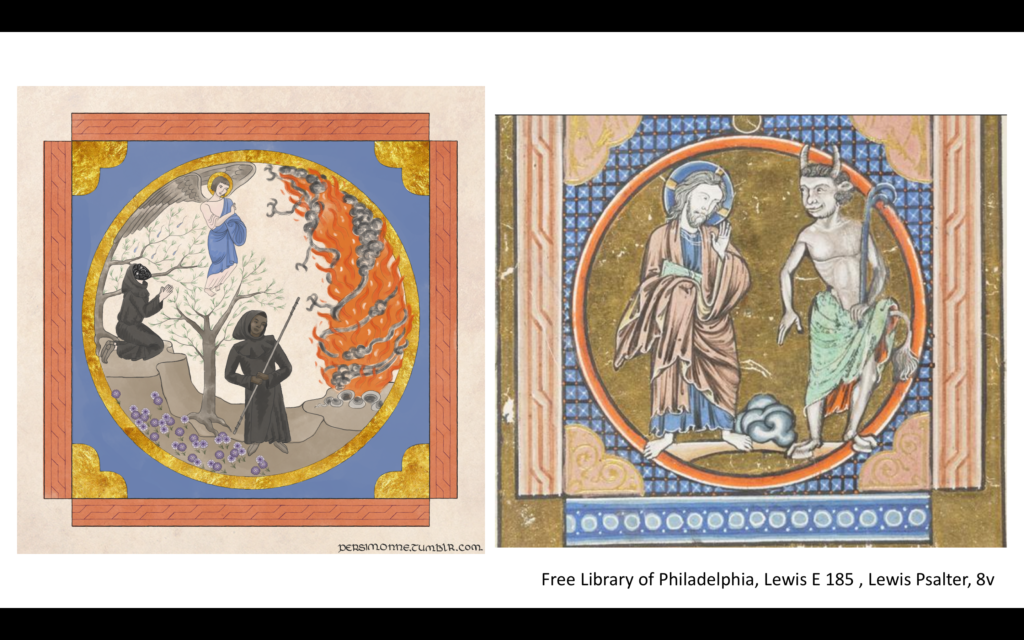
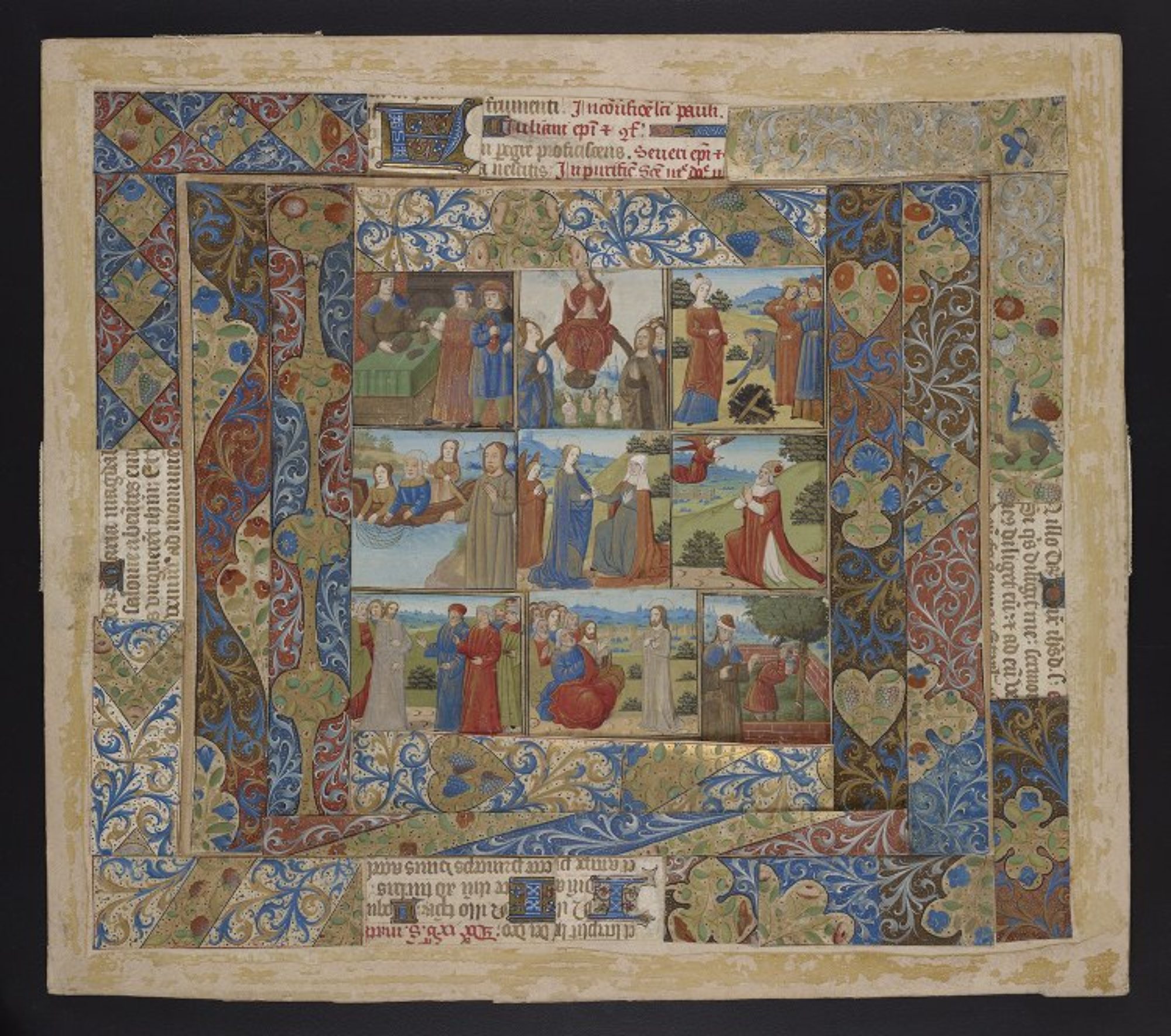
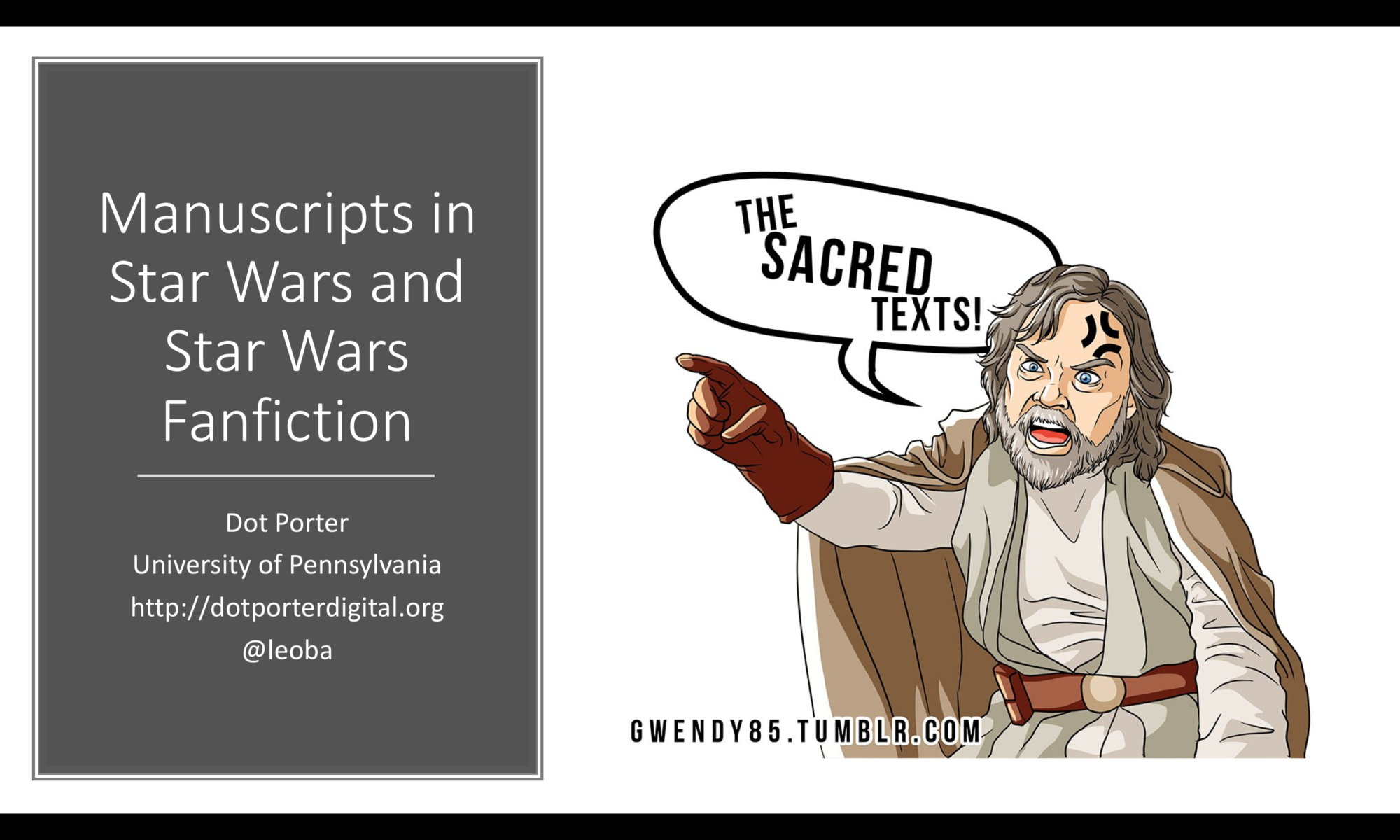
Awesome to the highest degree! Force ready!
series, starting with a two-volume illustrated edition of A Game of Thrones. – Dot Porter has posted her recent talk ” The Sacred Texts: Manuscripts in Star Wars and Star Wars Fanfiction .” – A manuscript fragment of
Great article. Very interesting. Next, I would love to read something linking all this knowledge to the fabled Journal of The Whills, that was quoted as a book in the prologue of the Star Wars original novel and obscurely addressed as a cult in the context of Rogue One.
It’s not one of the six pages you reviewed here, but apparently there is a photo in “The Rise Of Skywalker Visual Dictionary” that shows a page from one of the “Jedi texts” that is straight up plagiarized from Al-Biruni.
https://mckitterick.tumblr.com/post/658270639053029376
Thanks, I hate it!
(putting on my Star Wars fan hat) I think this just shows how the standards for The Rise of Skywalker were so much lower than The Last Jedi in every conceivable way. I think they did a nice job in TLJ using existing manuscripts as creative inspiration while in TROS they just, like, copied it lazily.
In the interest of completeness I’ll point out that there is a follow-up to this post (https://www.dotporterdigital.org/aionomica-rammahgon-and-de-sphaera-mundi-bibliographic-medievalism-in-star-wars/) where we take a little look at one of the TROS manuscripts and a few other things, but it’s not the one in this Tumblr post and neither of us wanted to look too closely because we disliked the movie so much.